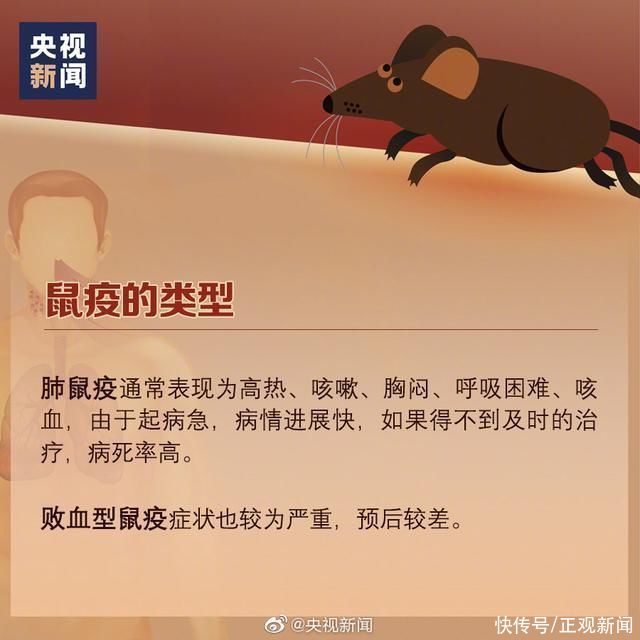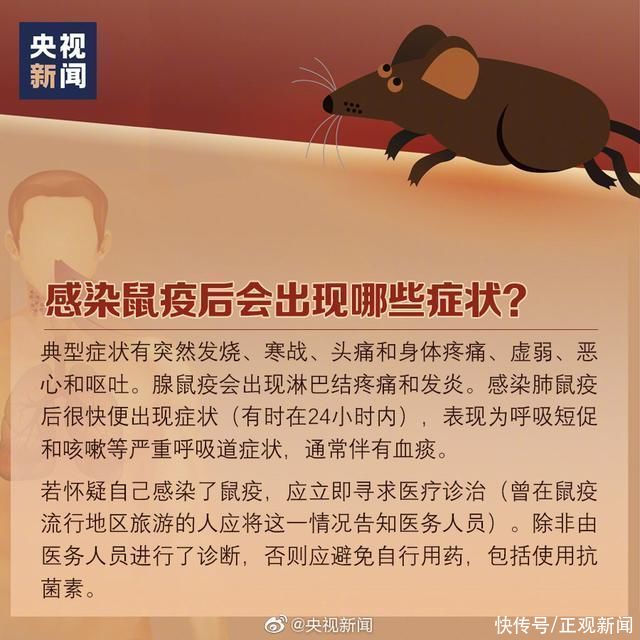On July 19, according to the Ningxia Health and Health Commission, a case of plague (bubonic plague) was confirmed in the General Hospital of Ningxia Medical University. How is plague spread? What are the clinical manifestations of plague infection? How to prevent plague? This article answers your questions↓
News Review:
Patient Liu Moumou (male, 45 years old, living in Shanghai Temple Ranch, Erdos City, Inner Mongolia Autonomous Region) , Occupation is a herdsman), at around 9:00 on July 12, the patient consciously had fever, fatigue, confusion, watery diarrhea, returned to Yinchuan from Inner Mongolia, and went to the Third People’s Hospital of Yinchuan City at around 11:00 on July 13 , went to the Fourth People’s Hospital of the Autonomous Region, went to the General Hospital of Ningxia Medical University on July 14, was diagnosed as a suspected plague case on July 19, and was diagnosed as a plague case on the same day.
At present, according to the requirements of the emergency plan for plague control in the autonomous region, the people’s government of the autonomous region has launched a four-level emergency response, and relevant regions and units have followed relevant laws and regulations. It stipulates that the emergency response mechanism has been fully activated, and strict classified management and control measures have been adopted for epidemic-related areas and personnel, and various disposal work is progressing in an orderly manner.
Plague:
 < /img>
< /img>
Plague is a severe infectious disease caused by Yersinia pestis infection. . The plague is mainly prevalent among rodents. Rats and marmots are the natural hosts of Yersinia pestis, and the rat flea is the transmission medium.



The Epidemic History of Plague:
Plague is an ancient infectious disease, once in There have been three pandemics in human history.
The first plague pandemic, the Justinian rat plague, began in the mid-6th century and disappeared in the 8th century, taking hundreds of millions of life.
The second plague pandemic began in the middle of the 14th century and lasted 300 years. The European continent lost one-third to one-half of its population.
The third plague pandemic began in Yunnan and Mumbai in the second half of the 19th century, and finally converged in Bei Manchukuo (pseudo-Manchukuo). Then came the Shanxi plague, the second plague in Northeast China, and the plague in other parts of Europe, Asia and Africa, which disappeared after the 1930s, and tens of millions of people died of plague in the world.
my country is one of the countries deeply affected by the plague. After the founding of New China, the plague was effectively controlled. However, due to the existence of different types of plague foci in many provinces and regions in my country, sporadic cases have been occurring in recent years.
Characteristics of plague:
Acute onset, short course of disease, high mortality, strong infectivity, and rapid spread.
Especially for septicemic plague and pneumonic plague, if untreated, the fatality rate is 30%~100%. 1 to 6 days, individual cases can reach 8 to 9 days.
Plague transmission:
Infection source: rodents and rodents, of which Rattus norvegicus and yellow-breasted mouse are the main sources of infection. Wild foxes, wolves, wild cats, hares, camels and sheep may also be sources of infection. The patient is the source of infection of pneumonic plague.
Transmission route:
1. Rat flea bite transmission
The bite of rat fleas is the main transmission route, which can transmit the pathogen (Yersinia pestis) to humans, forming a “rodent→flea→human” transmission mode.
2. Respiratory tract infection
patient respiratory secretions With a large number of Yersinia pestis, it can be transmitted from person to person through droplets and can cause a pandemic of human plague.
3. Transdermal transmission
Damage in healthy people Infection occurs when the skin and mucous membranes come into contact with the patient’s pus, blood, sputum, or the flesh and blood of sick animals.
population susceptibility
population is generally susceptible. Field workers, close contacts or predators of marmots, and pastoralists are high-risk groups. Long-lasting immunity can be obtained after plague infection, and a certain immunity can be obtained by vaccination.
Clinical manifestations of plague infection:

According to clinical manifestations and disease characteristics, plague can be divided into bubonic plague, pneumonic plague, septic plague and other types of plague.
Bubonic plague:
High fever and chills, accompanied by Nausea and vomiting, headache and pain in limbs, facial flushing, conjunctival hyperemia, bleeding spots on skin and mucous membranes, etc., are mostly manifested as swollen and rapidly developing lymph nodes in the groin, armpit and neck. After a week, the lymph nodes quickly purify and rupture.
Pneumonic plague:
Acute onset, chills and high fever, headache, chest pain, shortness of breath, purplish lips, cough and mucous membrane or bloody foamy sputum, often death due to heart failure and hemorrhagic shock.
Septicemic plague:
High fever, chills, confusion Clear, coma, and then septic shock, disseminated intravascular coagulation and extensive skin hemorrhage and necrosis.

How to prevent the plague:
Cultivate good personal hygiene habits, try to avoid going to epidemic areas and epidemic spots, and go to designated medical institutions in time if you have fever, cough and other related symptoms;< /p>
Strictly follow the requirements of the “Three Nos and Three Reports” for plague prevention and control, try to minimize contact with wild animals when traveling, do not hunt the animals at the source of the epidemic without permission, do not strip the animals at the source of the epidemic, and do not carry the animals at the source of the epidemic without permission The diseased (dead) marmots and other animals should be reported, the suspected plague patients should be reported, and the patients with unexplained high fever and sudden death should be reported. At the same time, take precautions against flea bites to avoid being bitten by fleas. Field workers should raise awareness of plague prevention and strengthen personal protective measures.
The general public should have a rational understanding and scientific response to the plague epidemic, and not believe, spread or spread rumors.
(cqh integrated Ningxia Health Commission, CCTV News, etc.)